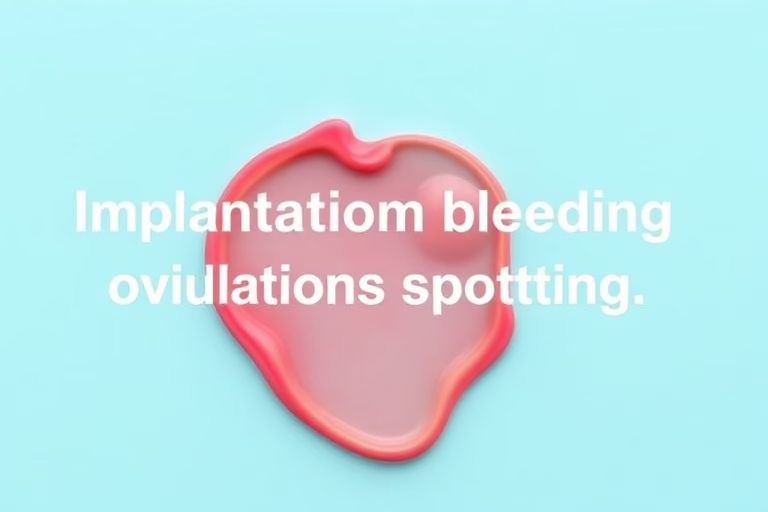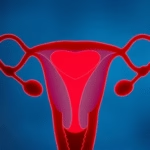Understanding Implantation Bleeding and Ovulation Spotting
We will be talking about the difference between implantation bleeding and ovulation spotting. Both of these occurrences are related to a woman’s reproductive cycle, but they have unique characteristics and implications. Understanding the distinction can help individuals better interpret their bodies’ signals. Implantation bleeding generally occurs approximately a week after conception when a fertilized egg attaches itself to the uterine lining. In contrast, ovulation spotting occurs in the middle of the menstrual cycle when an ovary releases an egg. Recognizing the differences is important for those trying to conceive and for general reproductive health.
Implantation bleeding is usually light pink or brown and may last a few hours to two days. It is often mistaken for a light period. Conversely, ovulation spotting can be brighter red and lasts a shorter time, typically just a few hours to a day. Both can be confusing, but understanding their timing and characteristics can provide clarity.
Characteristics of Implantation Bleeding
Implantation bleeding is one of the earliest signs of pregnancy for many women. When the fertilized egg implants into the uterus, some women may experience light spotting. This process can release a small amount of blood, leading to confusion with menstrual bleeding.
The key features of implantation bleeding include:
- Timing: Typically occurs 6 to 12 days after conception.
- Color: Light pink or brown.
- Duration: Lasts a few hours up to two days.
- Occurrence: Usually not accompanied by any other symptoms.
This process is a normal part of pregnancy and should not cause alarm unless accompanied by heavy bleeding or severe discomfort.
Characteristics of Ovulation Spotting
Ovulation spotting occurs when the ovary releases an egg, signaling that a female is fertile. This event typically happens around the midpoint of the menstrual cycle. Many women may notice light spotting or discharge during this time.
Key features of ovulation spotting include:
- Timing: Occurs approximately 10 to 14 days before menstruation starts.
- Color: Often red or pink.
- Duration: Lasts a few hours to a day.
- Associated symptoms: May include mild cramping or changes in cervical mucus.
Understanding these characteristics can help women track their fertility and menstrual cycles more effectively.
Differences in Symptoms
The symptoms accompanying implantation bleeding and ovulation spotting can vary significantly. For some women, the experience of spotting may include:
- Implantation Bleeding: Generally painless and may go unnoticed.
- Ovulation Spotting: Could involve mild cramping or an increase in libido.
Distinguishing between these symptoms is crucial for women tracking their menstrual cycles or attempting to conceive. Recognizing the subtle differences can provide women with significant information about their reproductive health.
When to Seek Medical Advice
While both implantation bleeding and ovulation spotting are typically normal, there are scenarios when medical advice should be sought. If spotting is heavy, lasts several days, or is accompanied by severe pain, it is essential to consult a healthcare provider. Other symptoms that should prompt a visit to the doctor include:
- Fainting or dizziness, indicating potential complications.
- Fever or other systemic symptoms.
- Heavy bleeding similar to a menstrual period.
Staying informed about your body can help you understand when something might be wrong.
How to Differentiate at Home
For women unsure whether they are experiencing implantation bleeding or ovulation spotting, there are ways to differentiate at home. One of the most effective methods is to track your menstrual cycle. Noting when your periods arrive, the length of cycles, and any spotting incidents can help provide clarity.
Other helpful tips include:
- Observe Color: Bright red spotting might indicate ovulation, while light pink or brown suggests implantation.
- Track Duration: If spotting lasts several days, it is more likely to be a period.
- Monitor Symptoms: Identify other symptoms, such as cramping or nausea, that may be more prevalent with implantation bleeding.
Should uncertainty persist, consider consulting a healthcare professional.
The Role of Hormones
Hormonal fluctuations play a crucial role in both implantation bleeding and ovulation spotting. Estrogen levels peak around ovulation, leading to the potential for spotting as the uterine lining prepares for possible fertilization. After ovulation, progesterone levels rise to prepare the uterus for implantation. If implantation occurs, estrogen and progesterone levels must be maintained for the pregnancy to continue.
In the absence of fertilization, progesterone levels drop, leading to menstruation. Thus, understanding your hormone levels can shed light on the nature of your spotting.
Impact on Fertility Awareness
Recognizing the difference between implantation bleeding and ovulation spotting is significant for women looking to conceive. Understanding the timing of these events can enhance tracking fertility windows. By identifying ovulation through spotting, women can increase their chances of conception.
Keeping a detailed record can aid in identifying personal patterns, allowing for more informed decisions regarding family planning.
Final Thoughts
In conclusion, distinguishing between implantation bleeding and ovulation spotting is vital for understanding reproductive health. Recognizing the timing and characteristics allows for better tracking of menstrual cycles and fertility. While implantation bleeding occurs post-conception, ovulation spotting signals a woman’s fertile window. By paying attention to the subtleties, women can enhance their awareness of their bodies, and achieve their reproductive goals.
Ultimately, if there is any confusion or concern about abnormal bleeding, consulting a healthcare provider can help clarify any issues surrounding reproductive health.
Frequently Asked Questions
1. Can I experience both implantation bleeding and ovulation spotting in the same cycle?
Yes, implantation bleeding can occur several days after ovulation, so it is possible to experience both in a single cycle.
2. Is implantation bleeding a clear sign of pregnancy?
While implantation bleeding can indicate pregnancy, not all women experience it. It’s important to consider other signs and symptoms.
3. How long does implantation bleeding last?
Implantation bleeding typically lasts a few hours up to two days.
4. Can I take a pregnancy test during implantation bleeding?
It is recommended to wait until the missed period for more accurate results from a pregnancy test.
5. What should I do if I am unsure whether I am experiencing spotting?
If there is any doubt regarding the nature of your spotting, consulting a healthcare professional is advisable.
Further Reading
What Type of Psychotherapy Is Best for Anxiety?







